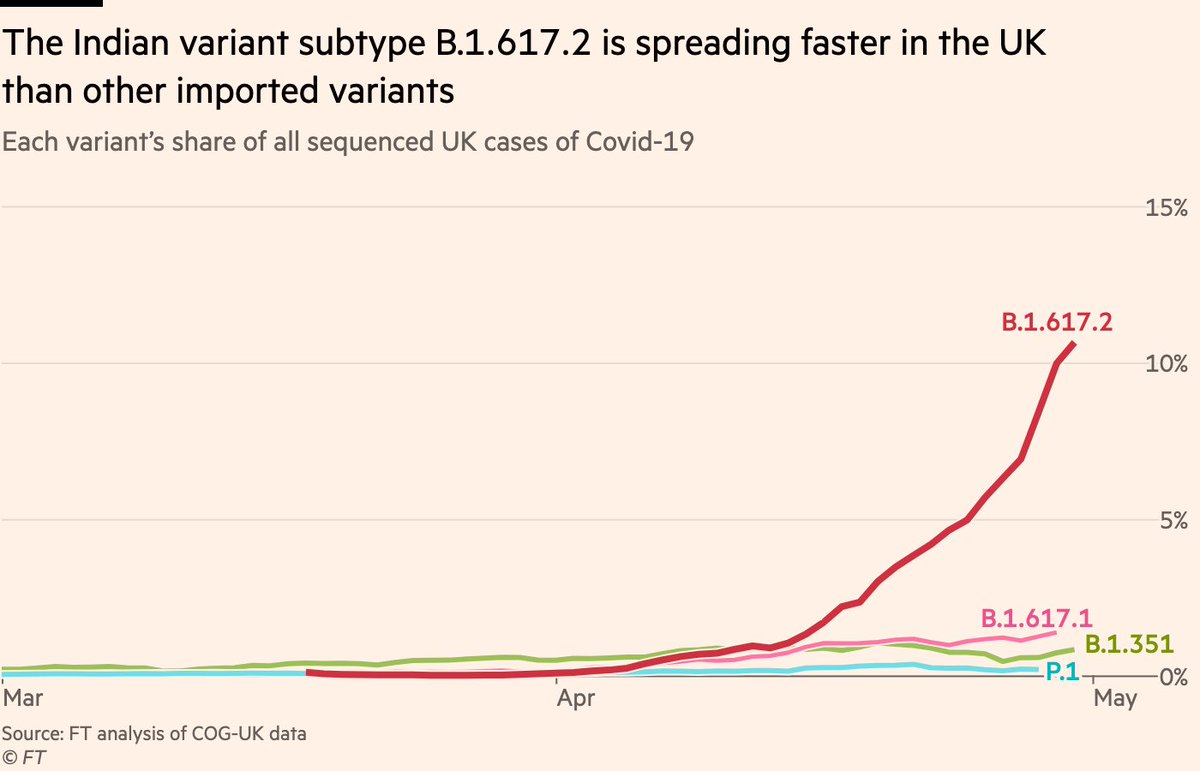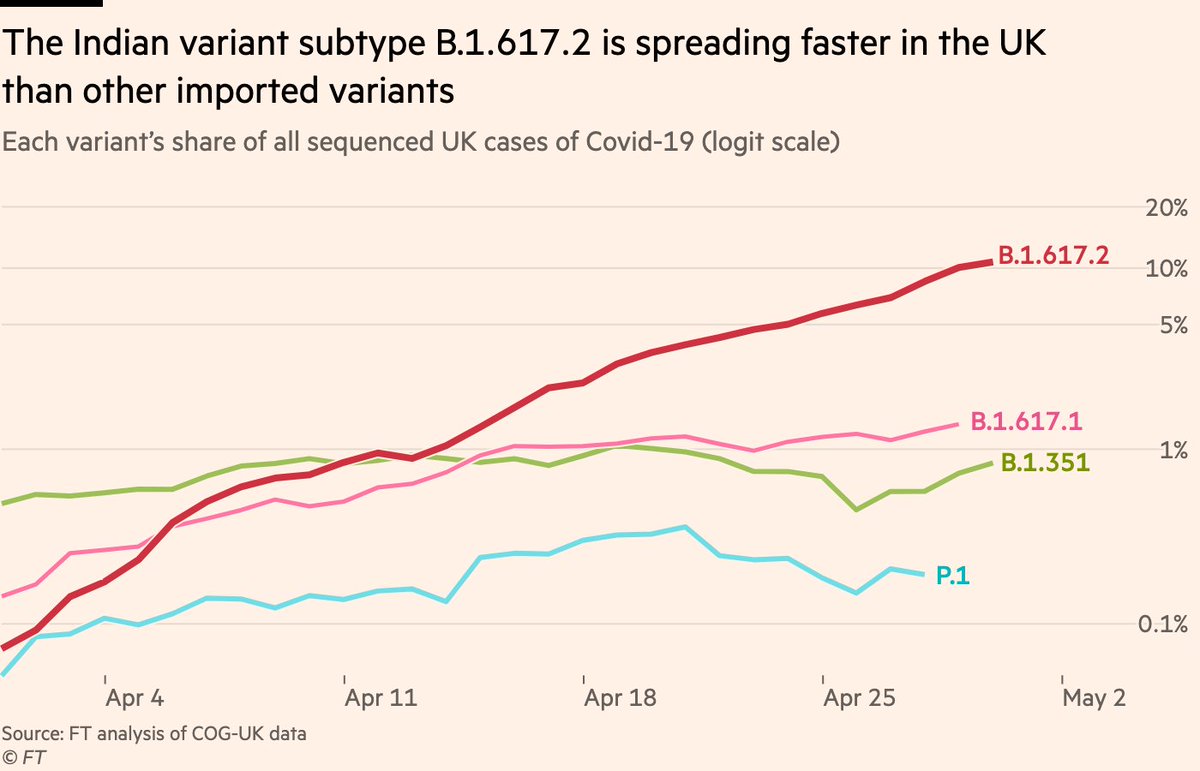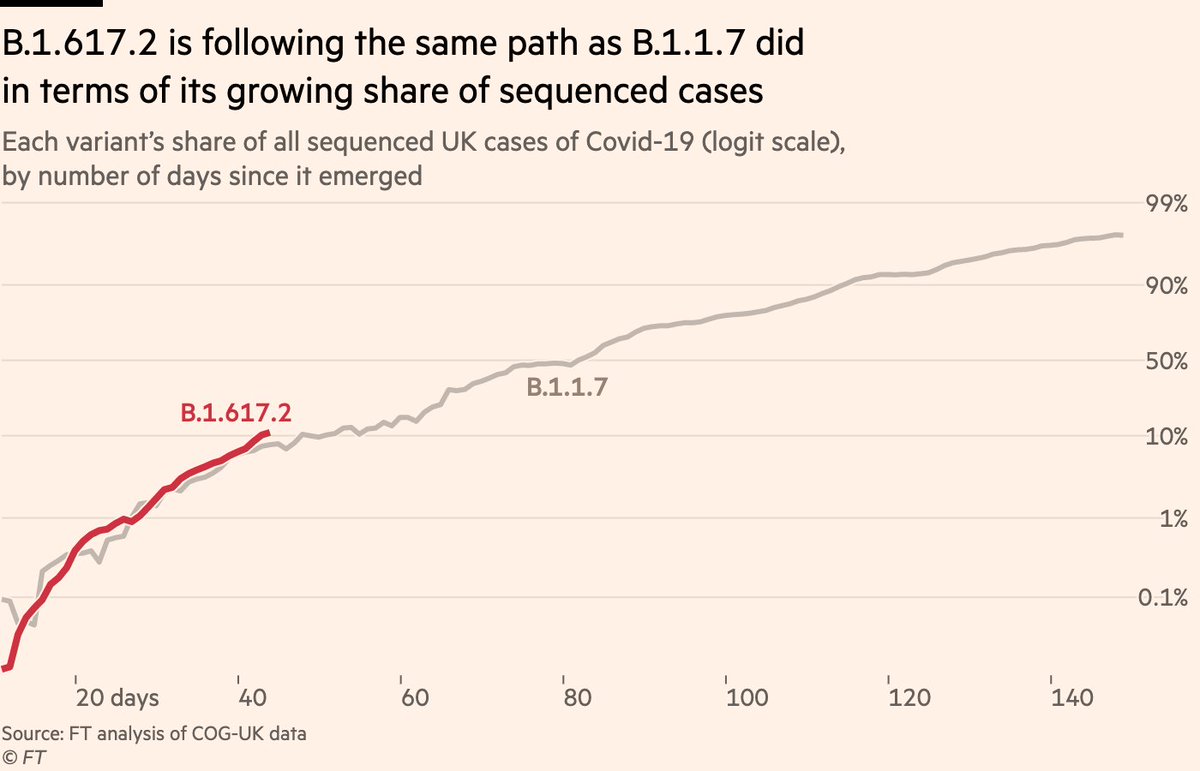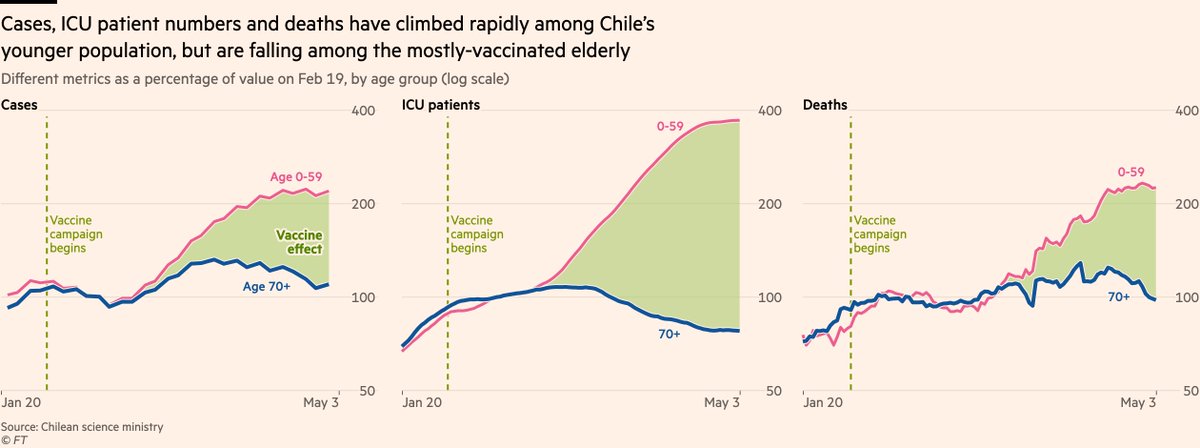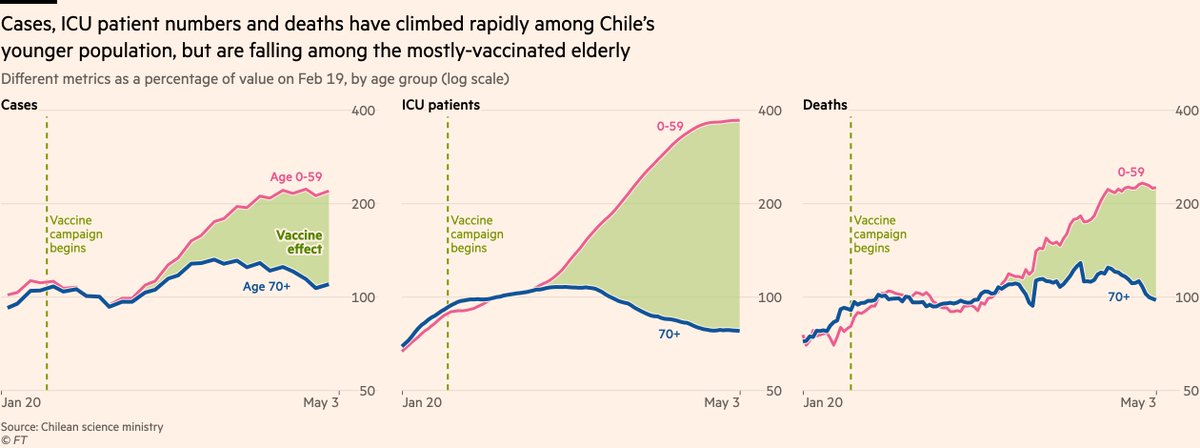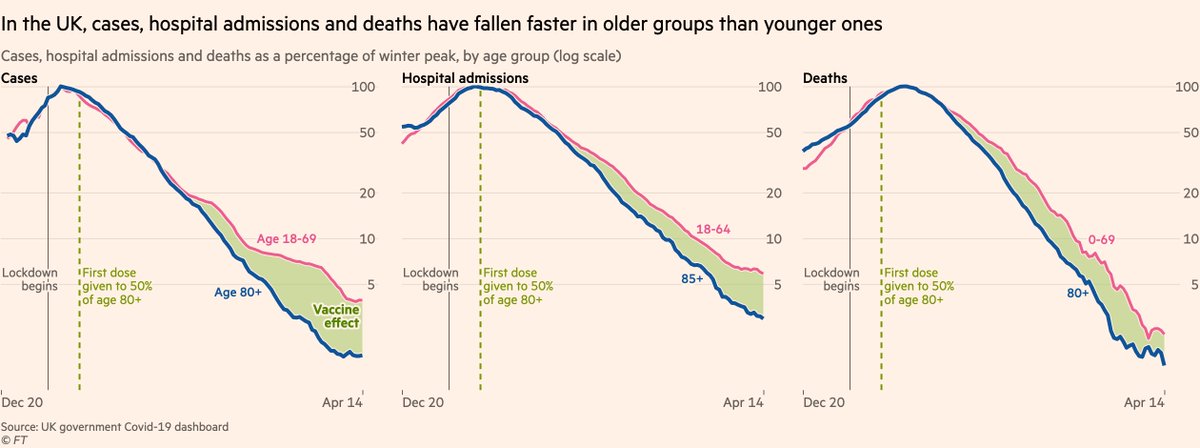
NEW: this chart is important
It’s early days, but there are signs that the vaccines may be working against the Indian variant B.1.617.2
Resurgences in Bolton & Blackburn are so far confined to younger people. Cases remain low & flat among the mostly-vaccinated older population.
It’s early days, but there are signs that the vaccines may be working against the Indian variant B.1.617.2
Resurgences in Bolton & Blackburn are so far confined to younger people. Cases remain low & flat among the mostly-vaccinated older population.

(We must also note that in the past, the higher levels of social mixing you typically see among younger people have led cases to rise among them first before climbing in the older groups, so vaccines are not the only thing that can cause this. We need this pattern to hold)
What about in India, where the variant originated and is believed to be dominant?
Age-stratified data on cases & deaths here is very patchy. But what little there is also hints at a vaccine effect: share of cases/deaths taken up by the elderly (the most vaccinated) is falling 📉
Age-stratified data on cases & deaths here is very patchy. But what little there is also hints at a vaccine effect: share of cases/deaths taken up by the elderly (the most vaccinated) is falling 📉

That’s two points — albeit tentative ones — in the "vaccines offer protection against B.1.617.2" column 💉💪✅
What about transmissibility?
Nothing definitive yet, but the jump in Bolton’s daily cases from ~20 to ~150 certainly hints something is different.
Still possible this is a bubble led by household infection from returning travellers, but as numbers grow that gets less plausible.
Nothing definitive yet, but the jump in Bolton’s daily cases from ~20 to ~150 certainly hints something is different.
Still possible this is a bubble led by household infection from returning travellers, but as numbers grow that gets less plausible.
In Bolton and Blackburn, numbers of cases associated with the Indian variant are climbing, while those not associated with B.1.617 have continued to fall.
Again I’d note here that the absolute numbers are small, but I think it would be negligent to ignore this trend.
Again I’d note here that the absolute numbers are small, but I think it would be negligent to ignore this trend.

New data published yesterday by @PHE_uk shows that there is a subtle yet visible trend whereby areas in which new variants (most of which are thought to be B.1.617.2) are most prevalent are also now seeing higher case growth, on average. 

A lot of very smart people are looking hard at the transmissibility question, and robust data will no doubt emerge.
In the meantime, proposals to ramp up vaccination in the area strike me as absolutely correct, and whether additional measures may be needed remains to be seen.
In the meantime, proposals to ramp up vaccination in the area strike me as absolutely correct, and whether additional measures may be needed remains to be seen.
Oh, and finally a big shout-out to @Rukmini who pointed me to the age-stratified Indian data, and wrote a fantastic piece on that Indian vaccine effect here: indiaspend.com/covid-19/covid…
Final bits:
Remember, vaccines put us in a much stronger position than when variants emerged in the past. The "cases are rising, next it will be hospitalisations and deaths" maxim has not become *untrue*, but it has become *less* true in terms of the steepness of any rise.
Remember, vaccines put us in a much stronger position than when variants emerged in the past. The "cases are rising, next it will be hospitalisations and deaths" maxim has not become *untrue*, but it has become *less* true in terms of the steepness of any rise.
The two things I'll be watching for in the comings days and weeks:
• Does the rise in cases remain confined mainly to under-vaccinated age groups?
• Do hospitalisations begin to climb, and if so what does the cases-to-admissions ratio look like?
• Does the rise in cases remain confined mainly to under-vaccinated age groups?
• Do hospitalisations begin to climb, and if so what does the cases-to-admissions ratio look like?
For now, I remain in the watching now worrying camp
https://twitter.com/jburnmurdoch/status/1392541138633084932
*** not *** not now 😅😅
• • •
Missing some Tweet in this thread? You can try to
force a refresh


